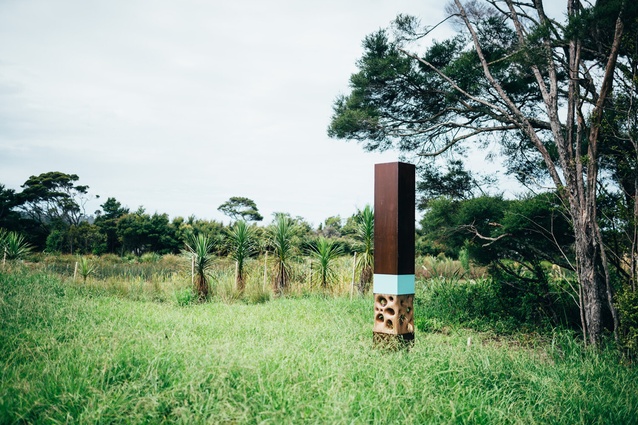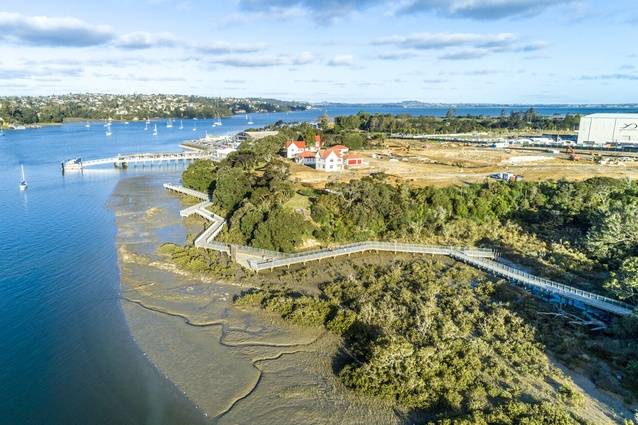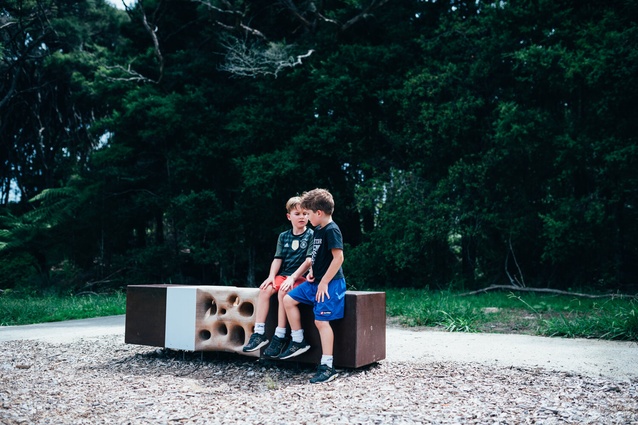Habitat markers: Architecture for critters
Hobsonville Point’s Habitat Markers in west Auckland have received international recognition (as announced on Landscape Architecture Aotearoa) with an honours award in the 2020 Society for Experiential Graphic Design Global Awards. Multidisciplinary studio Isthmus is behind the project. Isthmus principal Nick Kapica explains the design.
Interventions that attract attention and reveal what might live there are connecting people to place at Hobsonville Point—a medium-density suburb designed with the infrastructure necessary to generate a socially successful and sustainable community.
Without explanation or instruction, these architectural objects create a unique and memorable user experience. Solving the client’s desire for inhabitants of Hobsonville to come to know the natural community that they live amongst as well as the human one.

This successful new suburb comprises thousands of homes on safe streets, with new transport networks, schools, parks, playgrounds and public amenities. Diverse neighbourhoods have been designed to be more resilient and adaptable to change than is the standard development model. High quality and easily accessible public spaces have been planned as a big, shared backyard that provides multiple opportunities for play.
The coastal edge of the upper Waitemata sustains a host of native plants and wildlife from insects, tree lizards and terrestrial birds in the coastal forest, scrublands and long grass meadows, to fish, crabs and coastal birds in the mudflats, shell banks and rocky shoreline.
Three-quarters of Hobsonville Point is encircled by the coastal walkway Te Ara Manawa, designed in association with New York-based firm Nelson Byrd Woltz. It runs for approximately four kilometres, providing a continuous and accessible off-road walking and biking loop around the peninsula.
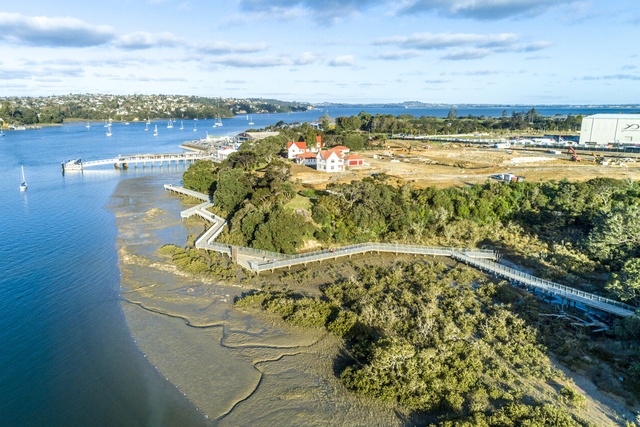
Te Ara Manawa is more than a walkway; it is a healthy, green necklace stitched into the surrounding neighbourhoods through a fluted edge, linking social spaces that are built up from and reflect Hobsonville’s history and character. It is a habitat for people and wildlife that contrasts with the built-up intensity of the peninsula, and an opportunity for meeting and socialising, discovery through play, pausing, resting and contemplation.
Hobsonville Point’s Play Strategy was devised to create a habitat for people and wildlife, encouraging children and people of all ages to connect with nature through play.
Small interventions – linking play destinations and playful encounters – are located at natural features, as well as remnant structures from the old air force base, to offer a rich and unique experience of place. Habitat markers – designed by Isthmus and fabricated by long-time collaborator Phillip Meier – take the form of large posts, standing or lying down.
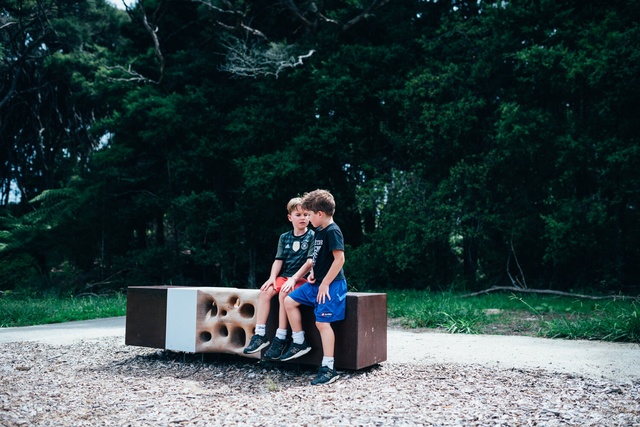
The markers are micro-architecture, with holes and hollows for birds and insects to make their homes within and, in turn, for children to explore and encounter nature. The CNC-routed forms are intended to prompt curiosity; multiple holes of varying sizes provide a habitat for different forms of wildlife, and the position of the cavities on the marker is dictated by the environment –whether it be forest floor, tree canopy, meadow, constructed pond or mudflat. Not knowing what wildlife may occupy the markers is part of the appeal; they become a live and evolving thing.
We have a responsibility as designers to respect whenua (land). This project makes this connection more obvious in a curious and fun way, architecture for critters as markers within a bigger project.
This article was first published on the Landscape Architecture Aotearoa website, which is published by the New Zealand Institute of Landscape Architects (NZILA).


